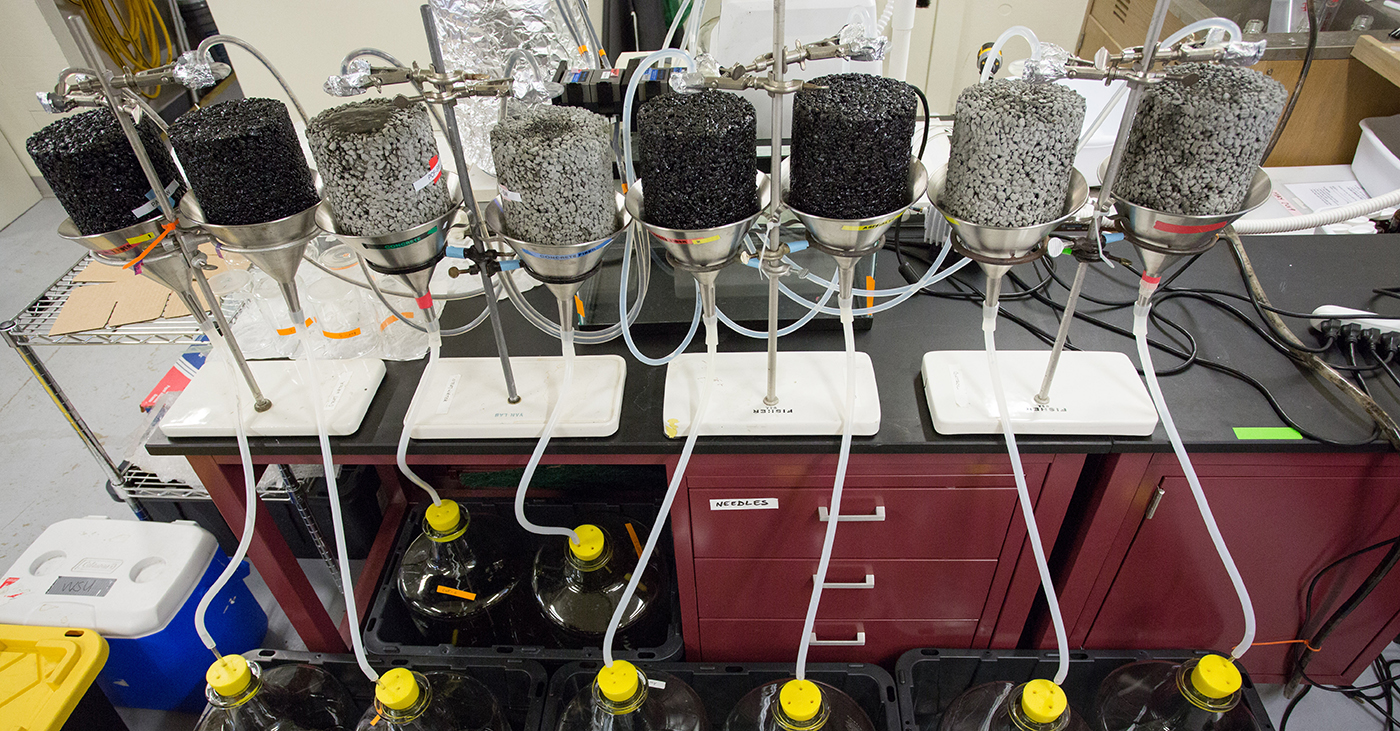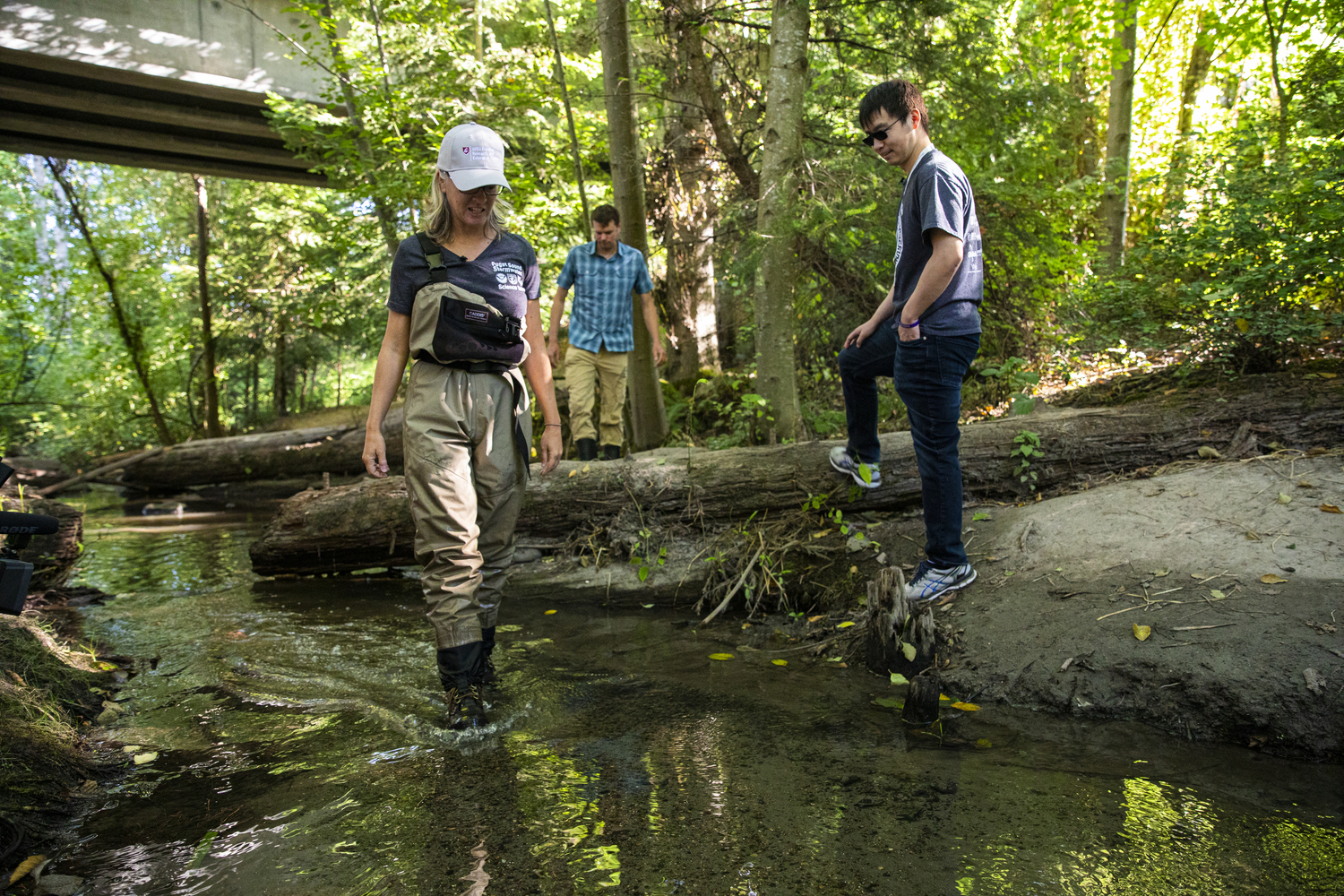
Research Projects
Research Projects
At the Washington Stormwater Center, we study how stormwater affects organisms and solutions to stormwater including source controls and green stormwater infrastructure.
To study impacts of stormwater, we use ‘model’ organisms as well as ‘target’ organisms of concern regionally or globally. Model organisms in our labs include aquatic invertebrates such as Daphnia magna and Ceriodaphnia dubia and the zebrafish (Danio rerio). Target organisms include wild-caught aquatic invertebrates and Pacific salmonids, primarily coho salmon (Oncorhynchus kisutch), Chinook (O. tshawytscha), and steelhead (O. mykiss).
Treatment approaches filter and/or infiltrate stormwater before discharging to surface water or groundwater. The green stormwater infrastructure that we study includes bioretention, bioswales, and permeable pavements. In addition to whether these technologies can reduce or eliminate toxicity associated with stormwater, we are interested in the ability of these green stormwater infrastructures to reduce concentrations of known chemical pollutants including metals, hydrocarbons, pesticides, and excess nutrients.
6PPD–quinone & Salmon

Every fall more than half of the coho salmon that return to Puget Sound’s urban streams die before they can spawn. In some streams, all of them die. But scientists didn’t know why. Now a team led by researchers at the University of Washington Tacoma, UW, and Washington State University Puyallup have discovered the answer.


